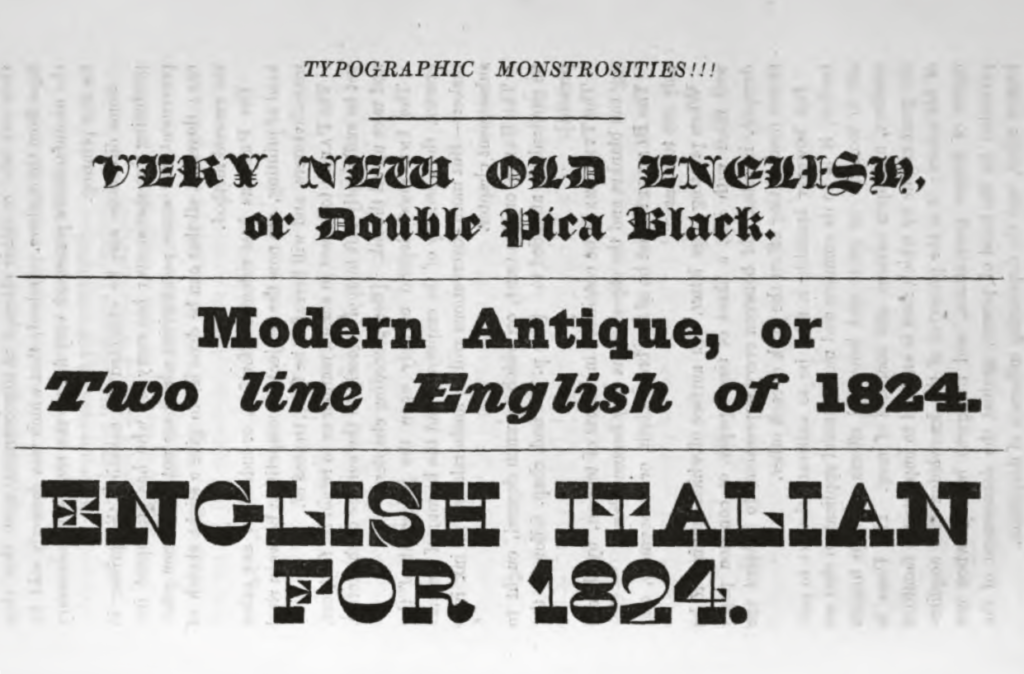Perva is a suite of three eye-catching fonts inspired by display types from the 19th century. This unconventional family has three different font styles that can be used individually or combined to build a playfulness multi-typeface design system. It is suitable for titling, posters headlines, book covers, packaging, social media, and branding.
Perva brings together a Slab serif font, a.k.a Antique or Egyptian; a Reverse-contrast or Italian; and an Old English Blackletter.

The design is inspired by the display types listed as “Typographic monstrosities” in Thomas C. Hansard’s book Typographia (1825). The name Perva is an allusion to the word perverse. And no wonder, as these font styles seem to have shocked some nineteenth-century critics and authors.
“Oh! sacred Shades of Moxon and Van Dijke, of Baskerville and Bodoni,” complained Thomas C. Hansard, continuing, “what would ye have said of the typographic monstrosities here exhibited, which Fashion in our age has produced?” (Hansard, 1825, p. 618).
Alongside Hansard, other authors have been troubled by the extravagance of those styles. Reverse contrast types, for example, were judged as degenerate or even an expression of perversity, as classified by Nicolete Gray in Nineteenth Century Ornamented Types and Title Pages, 1938.
Anyway, later was the spirit of fun of fonts like these understood. Walter Tracy suggested in Letters of Credit that the Italian face was created by a lively-minded person. And it “was a jeu d’esprit, not meant to be judged in conventional aesthetic terms” (Tracy, 1986, p. 28).
So, the “Typographic Monstrosidades” were interpreted in this project as a celebration of the inventive vocation of type design, appropriating playful voices for promoting typographic diversity.
What they found absurd back in the 19th century was understood here as interesting and enjoyable to introduce a contemporary approach of the types widely sold by foundries such as Bruce’s New York Type-Foundry and Caslon Foundry.
Each Perva font holds around 400 glyphs, covering the languages of Northern, Western, Central, and Southern Europe. Opentype features include case-sensitive forms and a couple of alternates for the Blackletter style.
Please check the specimen (pdf) for typeset examples, character set, language support and features.